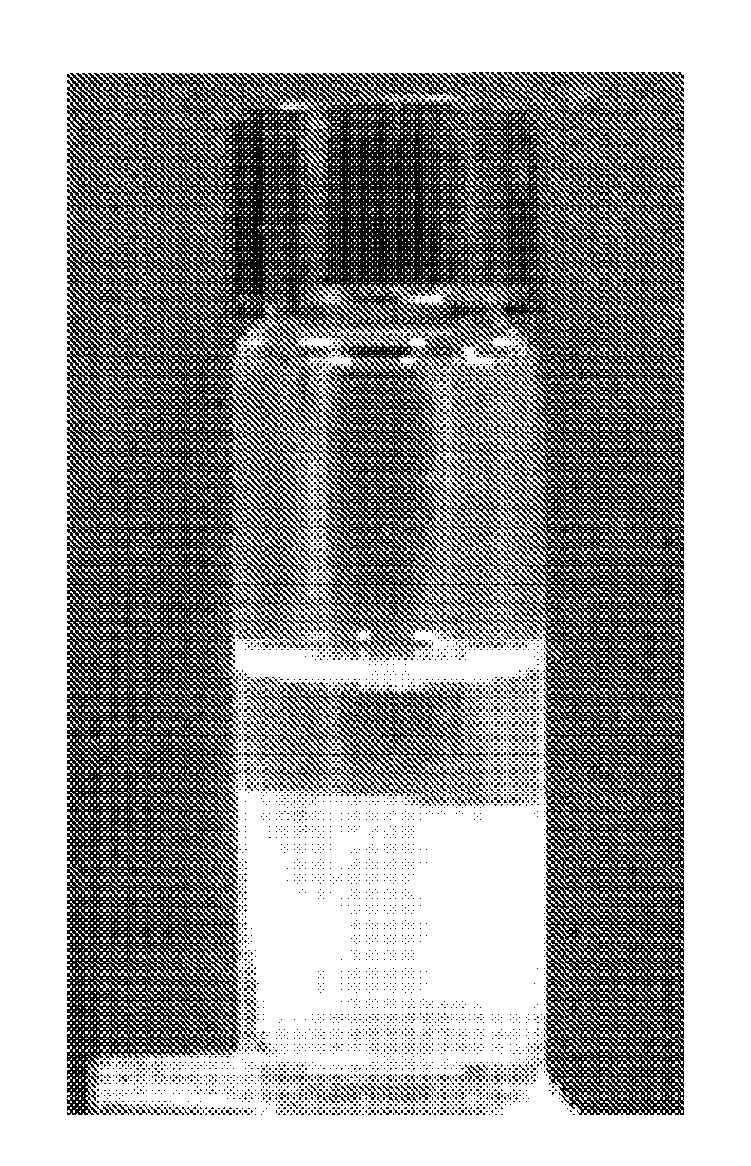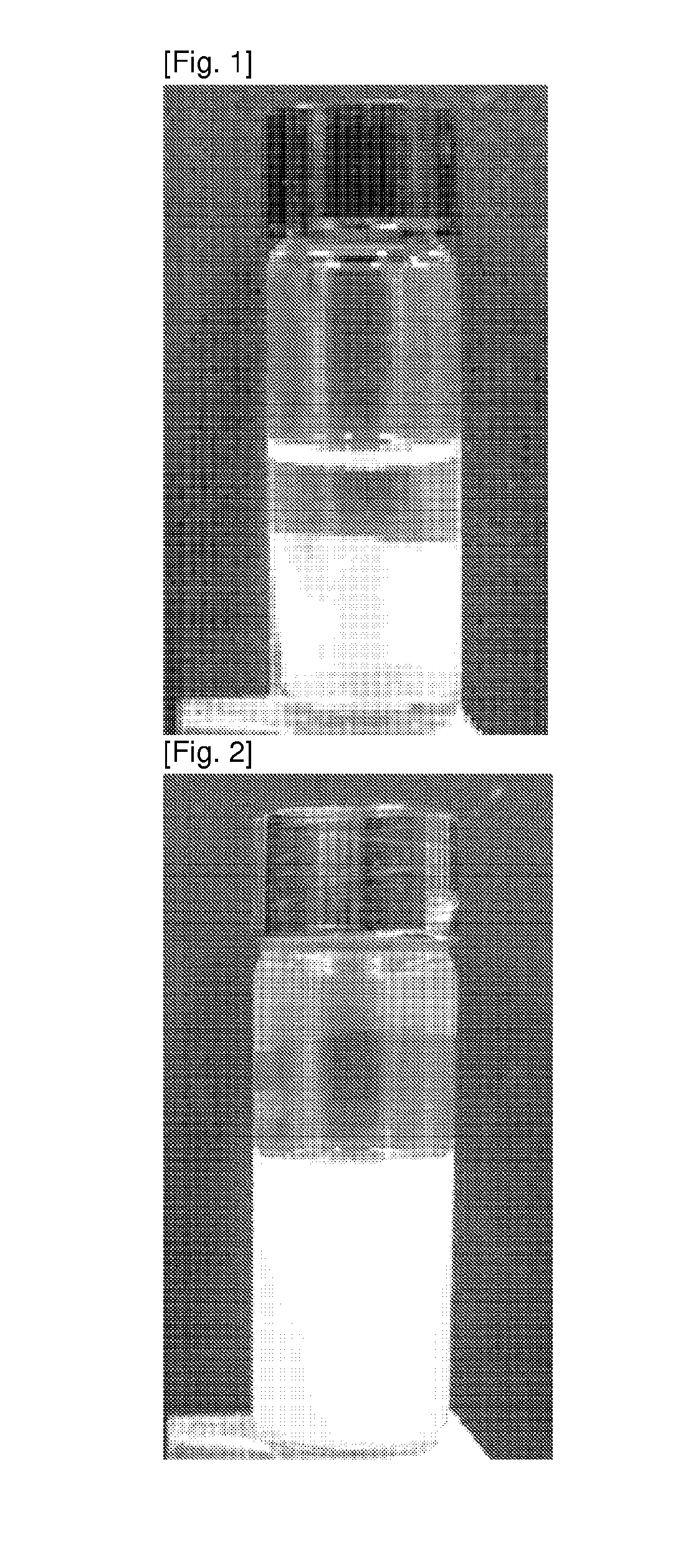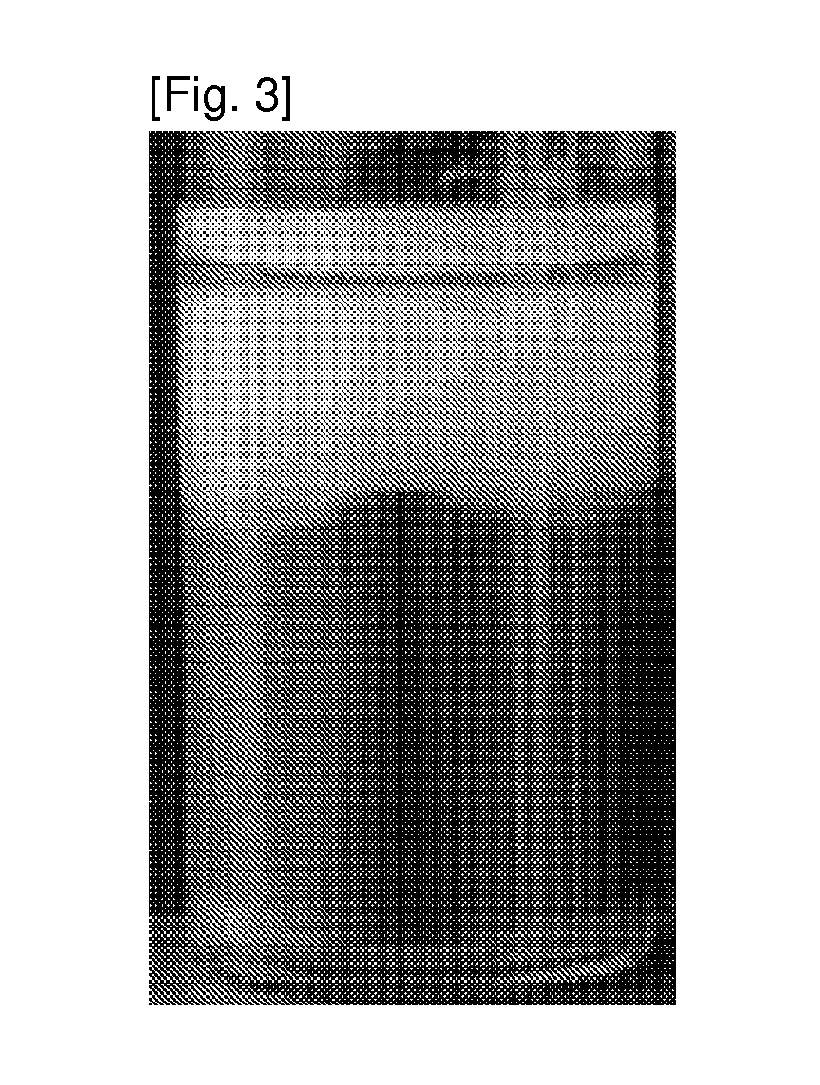Method of preparing gel polymer electrolyte secondary battery and gel polymer electrolyte secondary battery
a gel polymer electrolyte and secondary battery technology, applied in the direction of batteries, wound/folded electrode electrodes, sustainable manufacturing/processing, etc., can solve the problems of affecting the safety of batteries, affecting the performance of batteries, and affecting the stability of batteries, etc., to reduce the manufacturing cost of batteries, improve stability, and reduce the effect of thermal shrinkage ra
- Summary
- Abstract
- Description
- Claims
- Application Information
AI Technical Summary
Benefits of technology
Problems solved by technology
Method used
Image
Examples
example 1
[0069]
[0070]A solution, in which 0.00825 g of t-butyl peroxy-2-ethylhexanoate as a polymerization initiator is dissolved in acetone, was uniformly coated on a polyolefin-based non-woven fabric separator, and dried to manufacture a separator coated with the polymerization initiator.
[0071]
[0072]1 M LiPF6 was dissolved in a non-aqueous electrolyte solvent having a composition ratio of ethylene carbonate (EC):ethylmethylcarbonate (EMC)=1:2(v:v) to prepare a liquid electrolyte. 5 parts by weight of trimethylolpropane triacrylate as a polymer electrolyte monomer was added based on 100 parts by weight of the liquid electrolyte to prepare 3.30 g of a gel polymer electrolyte composition.
[0073]
[0074]94 weight % of LiCoO2 as a cathode active material, 3 weight % of carbon black as a conductive material and 3 weight % of PVdF as a binder were added to N-methyl-2-pyrrolidone (NMP) as a solvent to prepare a cathode slurry. The cathode slurry was coated on an Al thin foil of a cathode current coll...
example 2
[0078]A secondary battery was manufactured by the same method as example 1, except that dipentaerythritol pentaacrylate was used as a polymer electrolyte monomer, instead of trimethylolpropane triacrylate.
example 3
[0079]A secondary battery was manufactured by the same method as example 1, except that t-butyl peroxy-2-ethylhexanoate as a polymerization initiator was used in an amount of 0.0165 g, not in an amount of 0.00825 g, trimethylolpropane triacrylate as a polymer electrolyte monomer was used in an amount of 8 parts by weight, not in an amount of 5 parts by weight, and after a gel polymer electrolyte composition was introduced into a battery case, it was polymerized at 80° C. for 4 hours under a nitrogen atmosphere.
PUM
| Property | Measurement | Unit |
|---|---|---|
| voltage | aaaaa | aaaaa |
| temperature | aaaaa | aaaaa |
| temperature | aaaaa | aaaaa |
Abstract
Description
Claims
Application Information
 Login to View More
Login to View More - R&D
- Intellectual Property
- Life Sciences
- Materials
- Tech Scout
- Unparalleled Data Quality
- Higher Quality Content
- 60% Fewer Hallucinations
Browse by: Latest US Patents, China's latest patents, Technical Efficacy Thesaurus, Application Domain, Technology Topic, Popular Technical Reports.
© 2025 PatSnap. All rights reserved.Legal|Privacy policy|Modern Slavery Act Transparency Statement|Sitemap|About US| Contact US: help@patsnap.com



